Imagine a sunny beach with picture-perfect white sand, turquoise water, and palm trees. Although you may not be able to fly to a tropical destination, you can reproduce the ambiance at home with palm trees, depending on your garden’s hardiness zone.
Achieve a Mediterranean vibe regardless of whether you live in California, Florida, or a different state altogether. Choose a species that’s realistic for your growing conditions and space.
Species of palm like the Mexican fan palm or wax palm, though dramatic, are too tall for the average backyard. The sago palm and coconut palm, meanwhile, demand too much attention for most homeowners.

- Growing a Palm Tree at Home
- How to Plant Palm Trees
- When to Plant Palm Trees
- Windmill Palm (Trachycarpus fortunei)
- Queen Palm (Syagrus romanzoffiana)
- Pygmy Date Palm (Phoenix roebelenii) – A Miniature Palm Tree
- Sabal Palm (Sabal palmetto)
- Areca Palm (Dypsis lutescens)
- Lady Palm (Rhapis excelsa) – A Striking Palm Tree
- Foxtail Palm (Wodyetia bifurcata)
Growing a Palm Tree at Home
It may sound crazy, but growing a palm tree in your garden does not need to be complicated. Simply pick the appropriate types of palm plants for your climate and follow the care instructions. That’s all there is to it.
How to Plant Palm Trees
Pick your planting site, avoiding overhead wires and underground cables or pipes. Dig a hole that’s slightly shallower than the root ball. Tip the palm tree onto its side to remove the pot, then roll it into the hole.
Fill the hole with earth. Water the plant immediately and apply mulch. Water the tree frequently for the first couple of weeks, then twice a week for the rest of the summer.
When to Plant Palm Trees
It’s generally possible to plant palm trees throughout the year. However, since the first winter is stressful for a newly planted palm, spring or early summer gives it the best chance to get established before the first frost.
Windmill Palm (Trachycarpus fortunei)
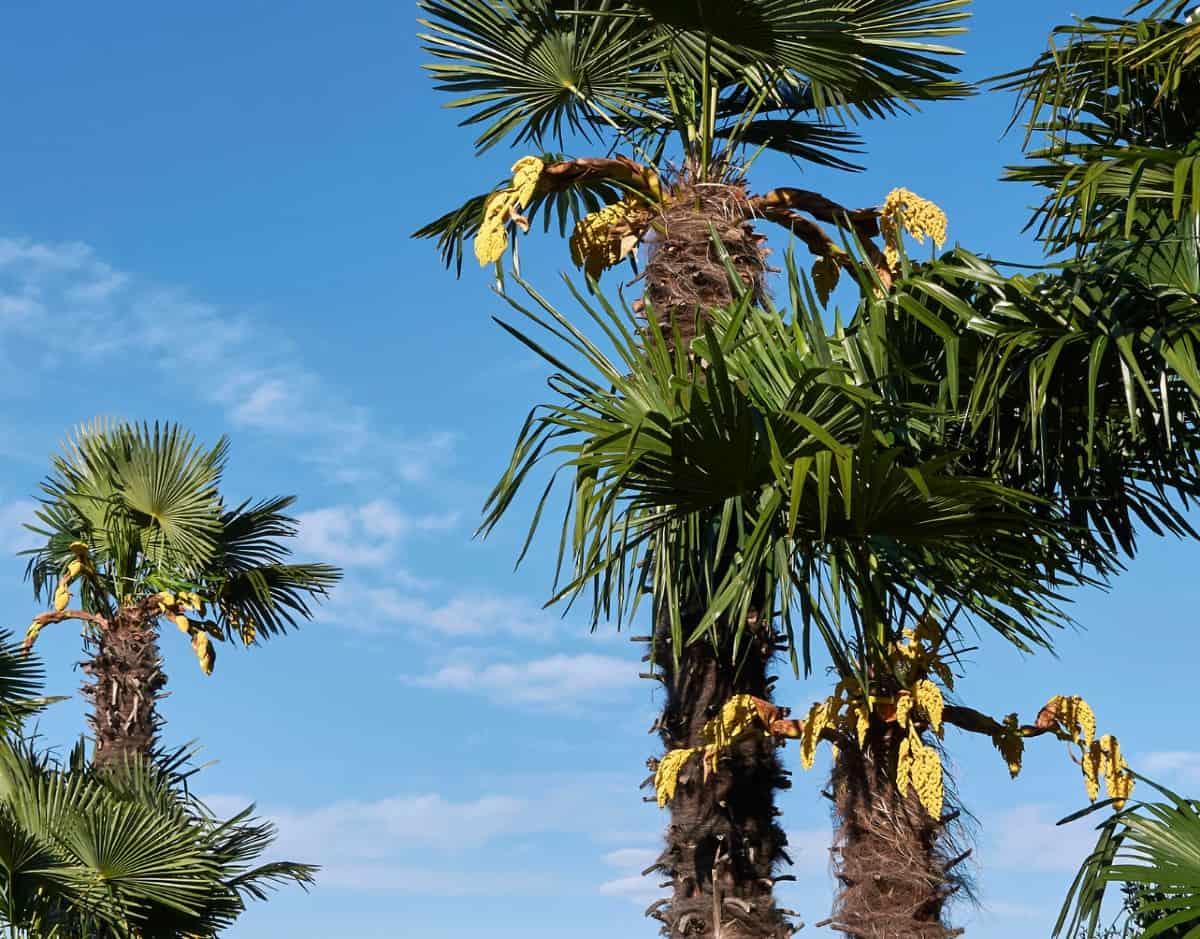
Happy in zones 7b to 11, the windmill palm tree is one of the only palms to survive freezing temperatures. It gradually attains a height of 10 to 20 feet with fan-shaped leaves. This tree adds a tropical feel to a poolside or garden area.

The windmill palm has yellow flowers that transition to summertime purple fruit. The seeds of these cold hardy palm trees take two to three months to germinate.
Although it is not technically one of the small trees for landscaping purposes, it is one of the smaller palm tree species and appropriate for limited yard space.
Use this shade lover as a specimen plant or in a well-draining container. In any case, protect the tree from strong wind, water it regularly, and give it slow-release palm tree fertilizer twice per growing season.
Queen Palm (Syagrus romanzoffiana)
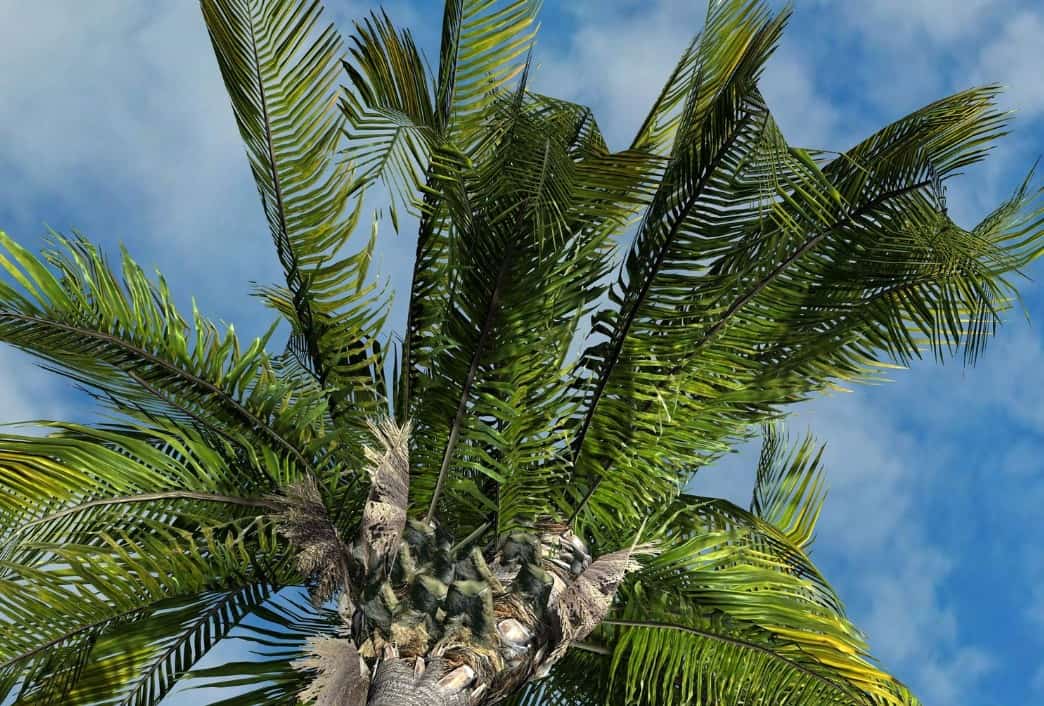
This dramatic palm reaches 30 to 40 feet tall with ten-foot-long pinnate fronds. On its gray-barked single trunk, tiny, waxy flowers transform into clusters of small, orange dates. Expect germination to take anywhere from six weeks to six months.
Site this fast-growing palm in moist, acidic, well-drained soil in a sunny location in zones 9b to 11. Water the tree thoroughly with a hose every other week during the summer and give it palm tree fertilizer in mid-spring and early summer.
Pygmy Date Palm (Phoenix roebelenii) – A Miniature Palm Tree
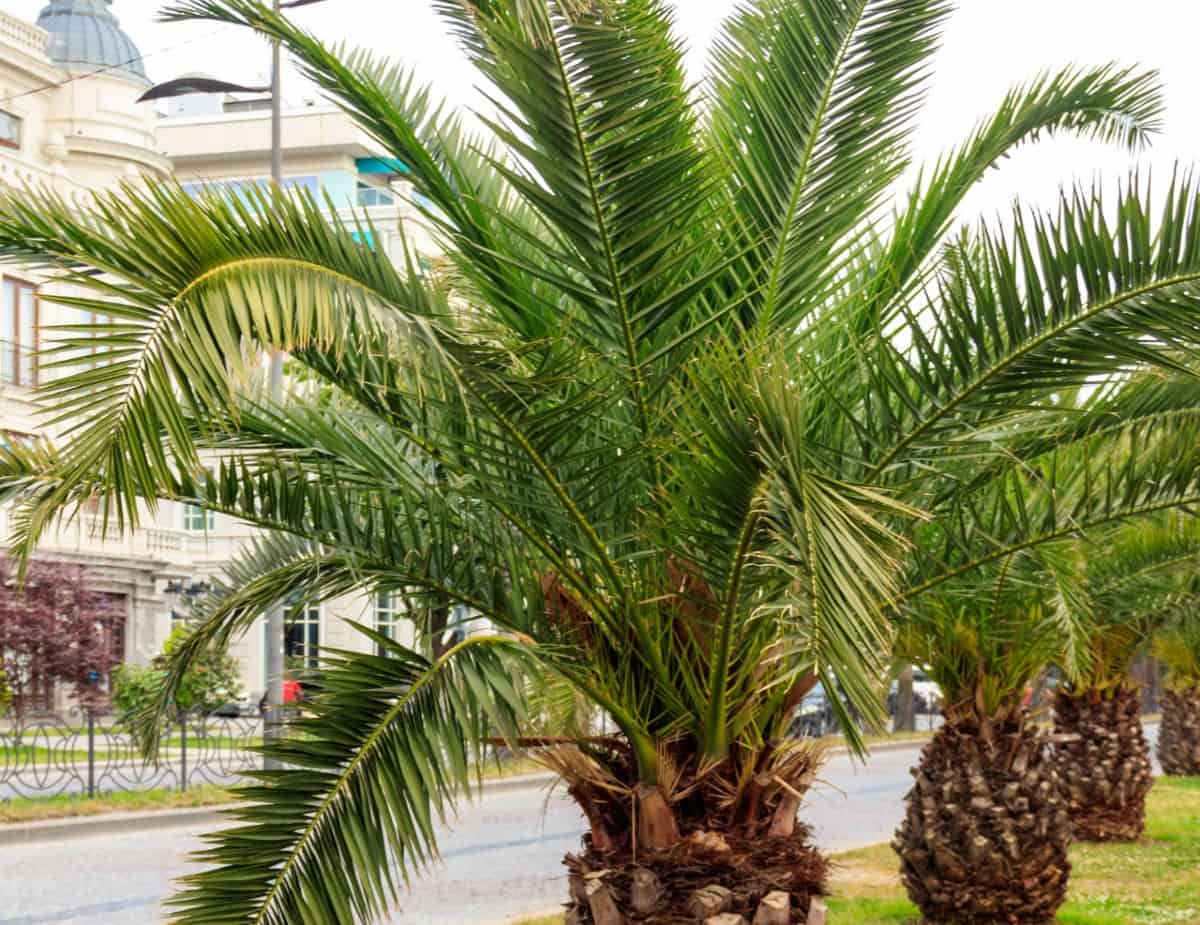
This small version of the date palm, Phoenix dactylifera, has thorn-studded leaf stalks and yellow flowers that transform into tiny, purplish, sweet dates. The slow-growing pygmy date palm propagates via both seeds and suckers that sprout around its base.
This palm thrives in any level of sun, but make sure to shelter it from the wind and extreme temperatures. Its ideal zones are 10 and 11, although it manages in zone 9b, especially if it overwinters indoors.
Plant this tree in sandy, fertile, neutral, or acidic, well-drained soil. It needs regular watering but should not get soggy. Apply slow-release rose fertilizer in the spring and summer.
Sabal Palm (Sabal palmetto)
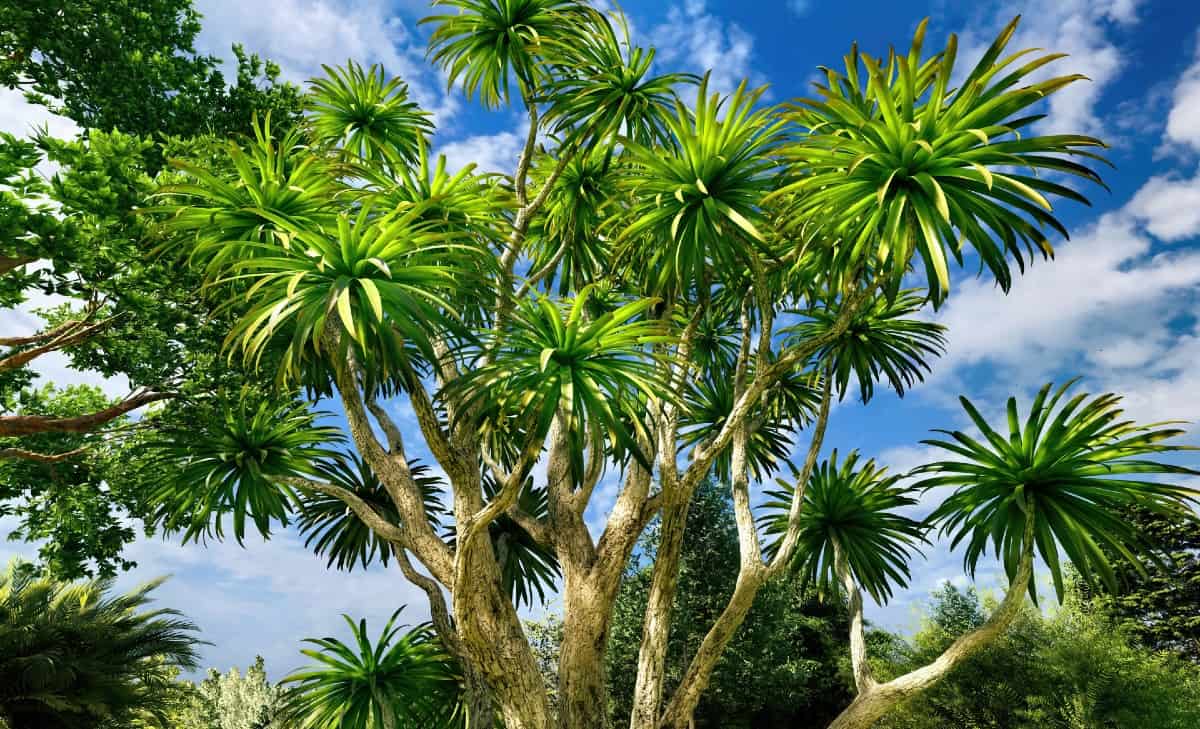
This evergreen reaches 40 to 50 feet tall with gray-green, fan-shaped leaves. It produces late-spring fragrant white flowers and late-summer shiny black fruit.
People use the new leaf buds, or heart, of the sabal palm in a salad. Grow the tree in a group or as a specimen plant or alongside a road. It thrives in zones 8 to 11.
The sabal palm’s seeds germinate in two to three months in full sun and moist, well-drained loam or sand. Water the tree regularly until it’s established, at which point it tolerates drought, salt, and wind.
Because of its drought tolerance, use sabal palm as one of the desert shade trees for your yard if you live in an arid climate.
Areca Palm (Dypsis lutescens)
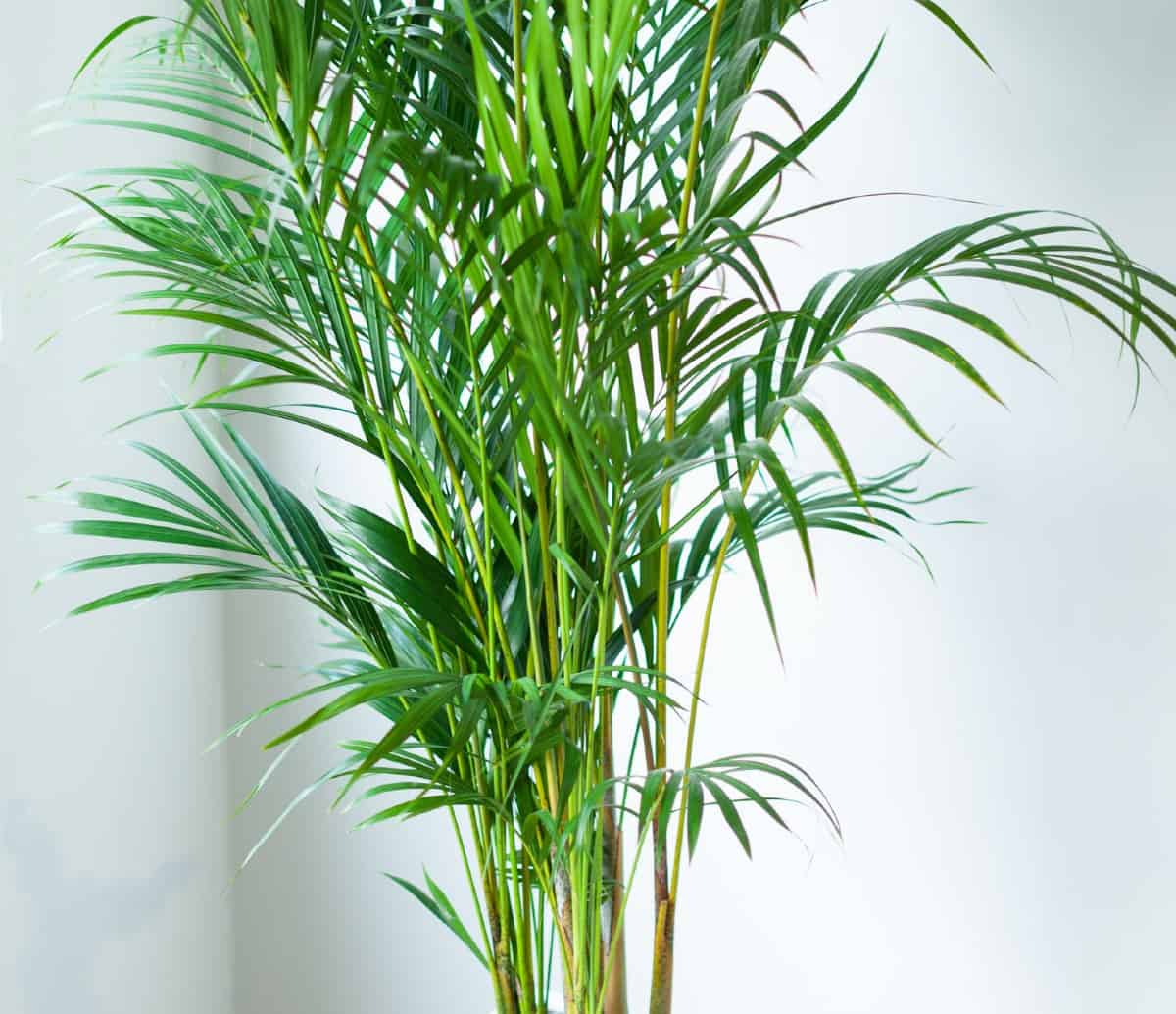
This bamboo-like palm that extends 12 to 30 feet tall has summertime pale yellow blossoms. It grows outdoors in zones 10 and 11 but is sensitive to cold temperatures.
It’s most common to keep this plant indoors, although you may leave it outdoors in the summer. Repot it every other year in a tight container. The areca palm germinates in six weeks if grown from seed. Choose fertile, moist, well-drained, neutral, or acidic soil.
Place the pot somewhere with bright, indirect light, and let the soil dry out between waterings. Give the areca palm weak liquid fertilizer every one to two weeks during the growing season. It suffers if fertilizer salts accumulate.
Lady Palm (Rhapis excelsa) – A Striking Palm Tree
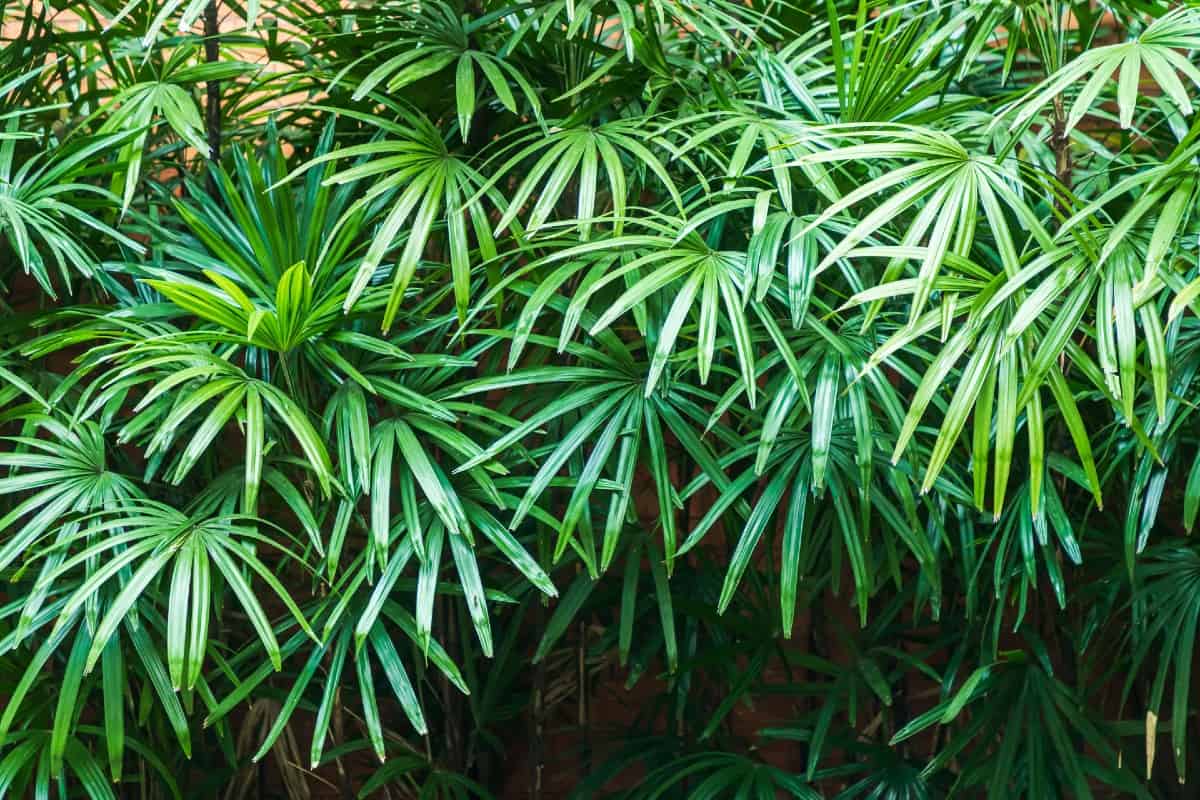
This short evergreen has sturdy fiber-coated canes and long, glossy leaflets, as well as tiny yellow flowers in the summertime. The lady palm propagates using both seeds and division.
Lady palms make excellent houseplants, or this species flourishes outdoors in zones 9, 10, and 11. Use it as a foundation or border plant, privacy screen, or palm trees as shrubs in a hedge.
Outdoor lady palms do best in partial to full shade, while indoor ones prefer bright, indirect light. Give a potted palm half-strength houseplant fertilizer monthly from April to September.
In either case, choose well-drained, moist, neutral, or acidic soil and water when the surface is dry.
Foxtail Palm (Wodyetia bifurcata)
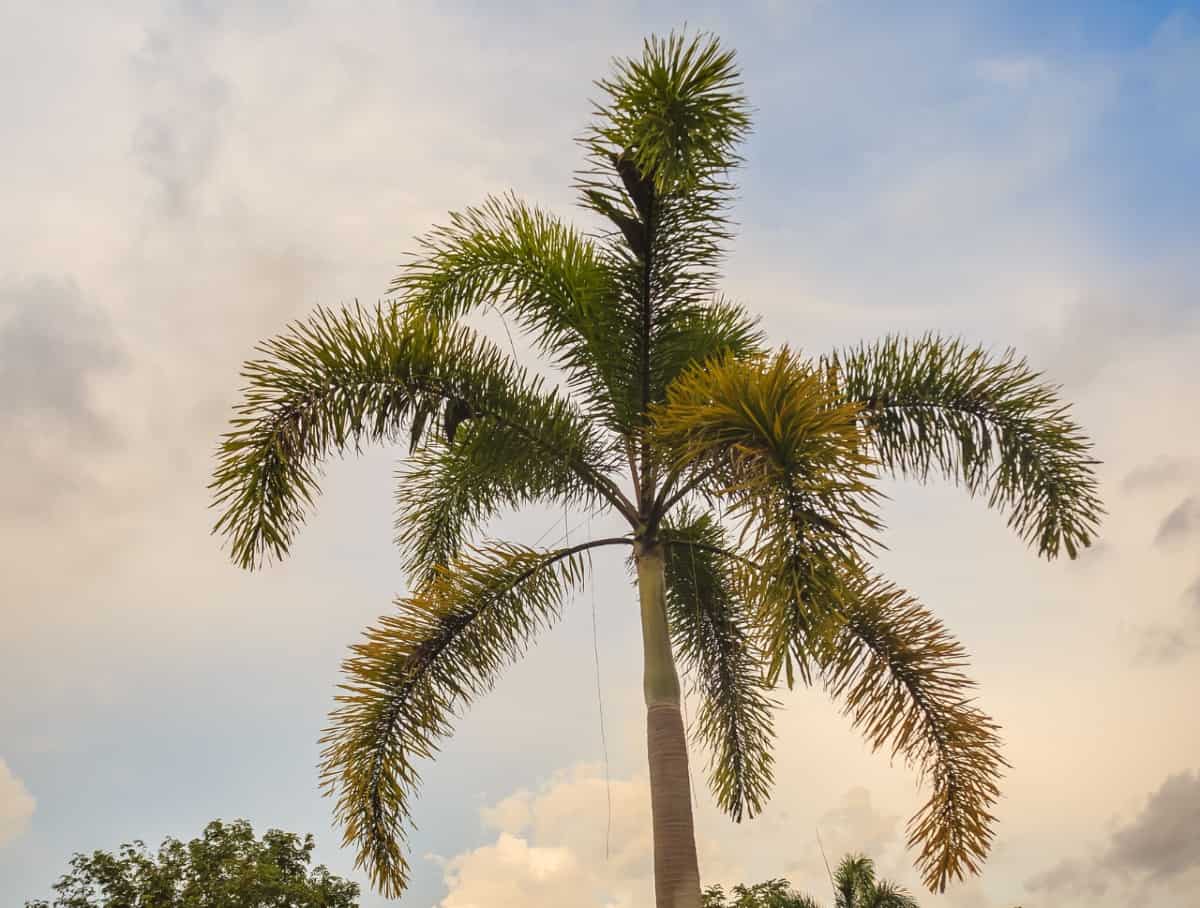
This fast-growing palm can reach 20 feet tall with ten-foot-long fronds and clusters of bright red fruit. Sow foxtail palm seeds in zone 10, preferably in full sun. A group of three or more trees looks elegant.
Keep the soil moist until germination, which typically occurs within three months but can take up to a year. Established plants only need water during droughts. Apply a slow-release palm tree fertilizer in the spring.
The foxtail palm likes humidity and tolerates salt spray and wind. Indoors, place a large container somewhere with lots of light. Well-draining, sandy, neutral, or alkaline soil enhanced with mulch is ideal.
Palm trees may not seem like the most practical plant to cultivate. Even if you live in an ideal sunny environment, other plants stop at a more reasonable height and require less effort on your part.
However, carefully choosing among the different types of palm ensures that you’ll find a plant well-suited to your growing environment and intended purpose.
Use palm trees as an indoor houseplant, accent plant, privacy screen, or more, and even harvest their leaves fresh for Palm Sunday.

If you found these palm tree ideas helpful, please share these tropical garden tips with your friends on Facebook and Pinterest.